‘Rick and Morty’s’ Dan Harmon and Scott Marder Look Beyond the Season 7 Finale: ‘We Have Plans and Grand Designs’ for Evil Morty (EXCLUSIVE)
- Oops!Something went wrong.Please try again later.
- Oops!Something went wrong.Please try again later.
- Oops!Something went wrong.Please try again later.
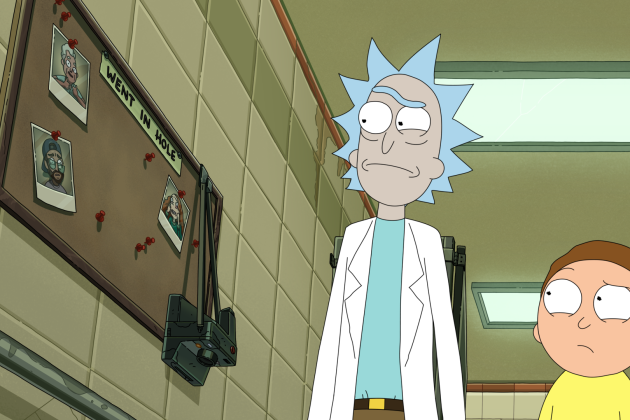
SPOILER ALERT: This interview contains spoilers from Season 7 of Adult Swim’s “Rick and Morty,” now streaming on Max.
With its Season 7 finale “Fear No Mort” airing in December, “Rick and Morty” was able to close off what had already been a rollercoaster of a season, one that delivered closure to the arcs of our beloved duo, and tying the knot on the series’ main plot thread — while still looking ahead at the uncharted territory left for Rick and Morty to venture to.
More from Variety
The show’s audience seems to have responded to the animated series’ latest offering: Its seventh season was released on Max in January, and according to Warner Bros. Discovery, is tracking about 25% higher than Season 6 in terms of viewing accounts through its first three weeks of availability.
For the first time since it aired, “Rick and Morty” co-creator Dan Harmon and showrunner Scott Marder break down the Season 7 finale, describing how they veered from the multi-dimension spanning, epic and canonized foder-filled episode the audience has come to expect as a typical finale.
“Fear No Mort” feels more like a self-contained story that sees both Rick and Morty tackle the baggage and emotional scars left behind from the mid-season finale’s fight against Rick Prime.
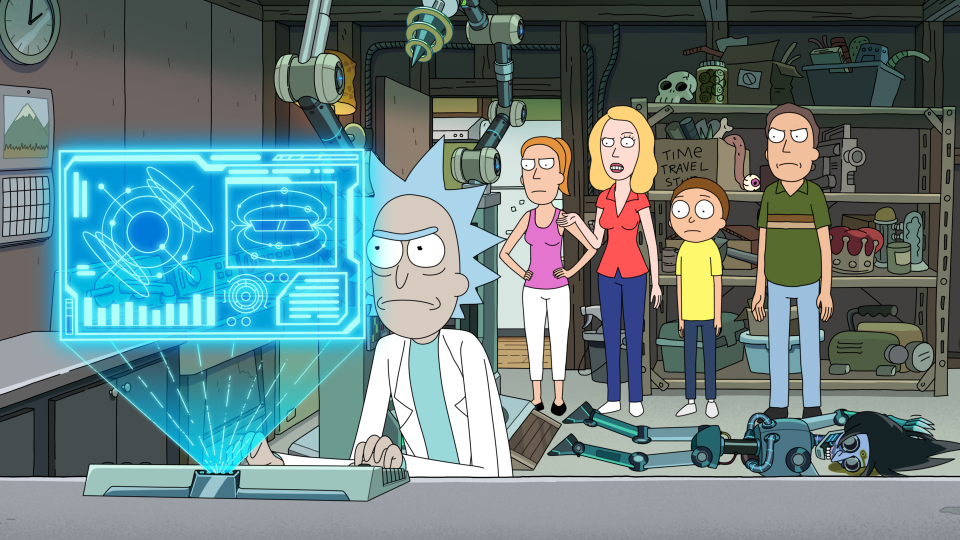
According to Harmon, this episode serves as the end of “Rick’s big, serialized, one-armed man canonical thing.” The finale brings closure to the story that has defined him since taking up residence at the Smith home since the series’ pilot.
“There’s such a futility to his goal of basically beating himself to death with his barbaric fists that we’re leaning into the futility of it; it’s a thing that he needed to do, and now it’s done. And that is not necessarily a wonderful thing that then makes him able to relax,” Harmon says.
The episode sees Rick and Morty discover a “fear hole” in a Denny’s bathroom, which has the ability to manifest the greatest fear of anyone who jumps inside. After initially deciding to leave it alone, Morty jumps into the hole, with Rick jumping in after him to save him. They fight off some monsters, escape the pit and go back home, only to realize that they’re still stuck inside the hole when Rick’s dead wife (and the reason for Rick’s vendetta against Prime) apparates, seemingly alive and well.
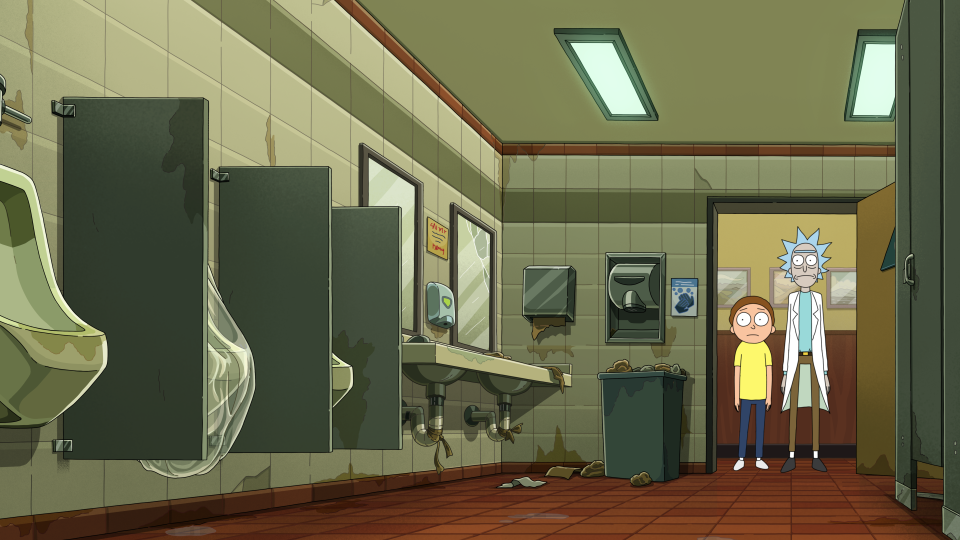
The two go back and forth, trying to determine what fear they must confront to break free. While Rick thinks Morty’s afraid of “losing” him to Diane, Morty believes it has more to do with watching Rick die. While Rick inevitably gets consumed by having Diane back, relishing her so much that he decides not to return to the real world, Morty perpetually keeps facing varying manifestations of these fears to determine what he’s actually afraid of.
The finale comes to a close when Morty hears Rick say that he’s “irreplaceable.”
In a twist that would have M. Night Shyamalan scrambling and taking notes, it’s those words that make Morty realize that he’s been alone in the hole this whole time, with Rick never actually having jumped in after him — his genuine fear being an over-reliance on Rick. That one day, he’ll realize that Rick never actually cared about him nor about his family, presumably having only been using them to chase after Prime.
Only then, after having accepted this as his true fear, can Morty escape the fear hole. And while the episode delivered an emotionally cathartic conclusion to Morty’s arc, the same goes for Rick’s.
In the episode’s final moments — after having learned that Diane was actually in the world created by the fear hole — Rick sprints to it, seemingly ready to jump inside to be reunited with his true love, only to then take a deep breath, look away and instead hang up a picture of Morty in the wall adjacent to the hole meant to celebrate the hole’s victors.
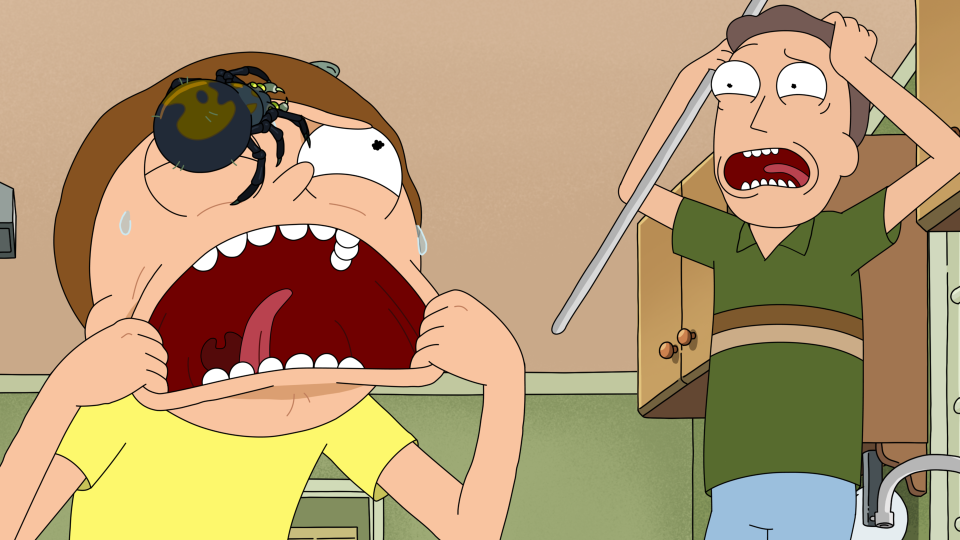
“I think the biggest fetish for me was making sure that it felt like a symmetrical inversion of Morty becoming indoctrinated into absolute nihilism by burying his body,” Harmon says, referencing the Season 1 episode “Rick Potion #9.” “That’s why we wanted to do the same needle drop, because this Rick is now just as lost in an emotional sense as Morty was in a philosophical sense at that moment.”
Harmon adds: “What we’re assuming with this story is this concept that we’ve fallen back on many times where Rick considers Morty replaceable. So, this is kind of a final step in turning them into a partnership. It’s certainly not an equal partnership in every way, but they’re friends, they’re roommates — they’re kind of like Ernie and Bert.”
As Marder put it, Rick went to that Smith house because he was “squatting just to try to get Rick Prime.” With that already done, he doesn’t have a lot of excuses for being there anymore, so now “he’s choosing to be there with his family.”
Another interesting facet of the show’s lore the finale was able to touch on was Rick’s relationship with Diane. Marder says he liked how the episode was able to give fans a sense of “closure” with her story, as fans were able to get a “fictional taste” of what they were like when they were together.
“An interesting aspect of it all is the intentionality of Diane being almost like Voldemort, something we don’t even dare express. Episode 5 explained why she’s not even in the ether, because she’s literally been erased from everything,” Marder says. “To be able to vocalize that in the middle of the season and then give you a finale, where we’re able to give you a fictional taste of what we believe they were probably like when they were a real pair, gives you a real sense of closure with her.”
The season finale occurs in the aftermath of Rick’s battle against his arch-nemesis, Rick Prime; the mid-season finale that finally gave fans the backstory of the series’ second “antagonist,” Evil Morty, to then have the duo pair up with him in a climactic battle against Prime. In the wake of this, Evil Morty leaves and threatens the two not to come after him, lest he uses a device capable of wiping anybody from existence from the ether, never to be found in any alternate dimension.
With that climax coming in at the season’s midpoint, it gave ample time for the team to explore the emotional fallout of the journey, and the toll it’s taken on Rick, “You’ve had this agenda, this vendetta, your whole life, and it normally ends in your own death as well. But like Rick’s living past that thing that’s been this singular focus his whole life and now it’s all about exploring who he is without that,” Marder says.
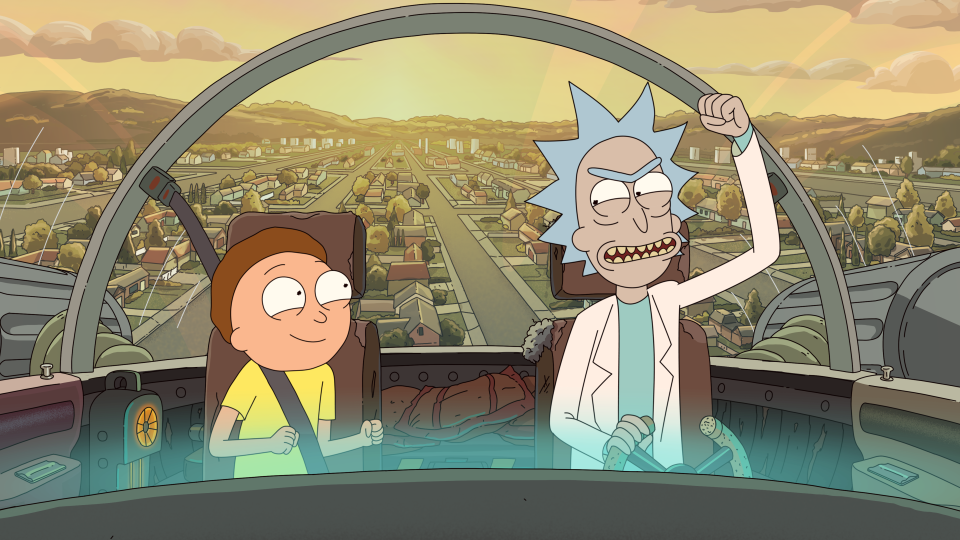
As for the structure of the series moving forward, the team says that the plan is for Season 8 to have the same “flow” and “vibe” as Seasons 6 and 7, which is to say that the team wants to strike a similar balance in the production of both canonical and serialized episodes that explores more narrative-driven stories — à la the Evil Morty, Space Beth and Rick Prime arcs — while also delivering on-self contained, episodic “classic Rick and Morty adventures” that fans have come to expect from the raunchy animated comedy.
Harmon elaborates by saying: “There’s obviously been a lot of shakeups and transitions that have happened that are luckily coinciding with some of these canonical storylines being resolved. If I could set a framework for fans of the show, it’s the old characters and all these things, but it’s like, this is an opportunity for a rebirth. I mean, the kind of canonical things like searching for Rick Prime, these are things that come out of the ether, and then they acquire this gravity, and then they become a canonical serialized story.”
“I think people should expect more random embers shooting off of that fire and turning into organically gigantic serialized things of their own.”
Still, Harmon admitted that he’s still “allergic to serialized, canonical stuff” and that fans can still continue to expect a slew of episodic episodes reminiscent of those “classic,” self-contained episodes: “I will always target the episodic personally. Because, like, your job is to fight gravity. And gravity is serialization. That’s what happens organically; gravity is a great thing. But you’re supposed to want to fly.”
“Eight will have a lot of similar flow and vibes to six and seven, which is like a cool balance of silly and one-up canonical stuff,” Marder says. “That’s the stuff I want as a fan. And that’s the stuff that Harmon and I work on all jammed together. I’m really proud of these last couple of seasons; they’re sort of the perfect blend of what I look for as a fan.”
As for Evil Morty specifically, Marder confirms that we have not seen the last of him: “We can expect to see him in the future. We certainly have plans and grand designs with him, for sure.”
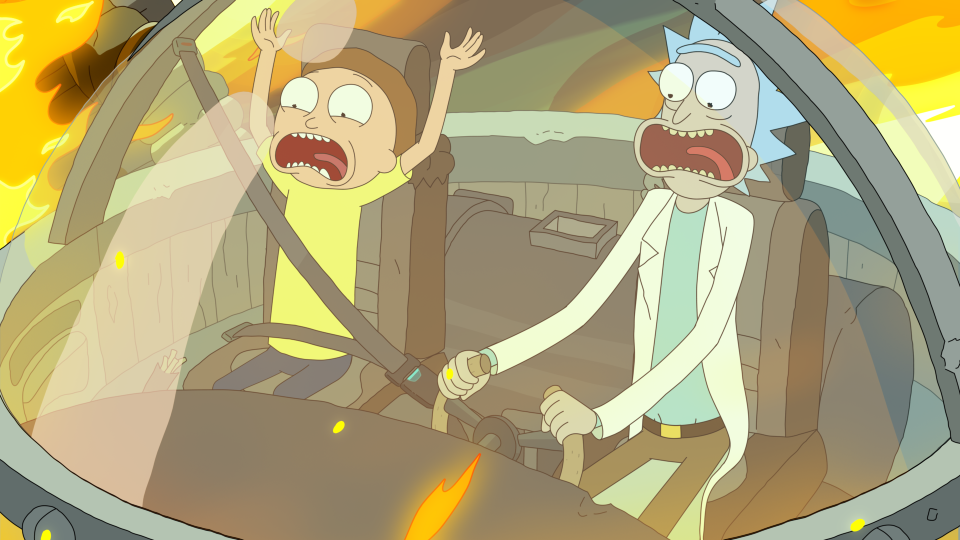
With Justin Roiland, co-creator and original voice of both Rick and Morty, ousted from the show, the team had to pivot and cast the next generation of voice actors who’d don the iconic lab coat and yellow shirt.
Enter Ian Cardoni and Harry Belden, the new voices of Rick and Morty, respectively. When asked what special sauce the new voices had that made them perfect for the gig, Marder praises their abilities to “nail” all aspects of their voices, not just Rick’s loud cadence and scream.
“For Ian, who plays Rick, it was certainly the conversational aspect of Rick, which was like a much harder-to-nail aspect of Rick’s voice than most people gave Roiland credit for. Everyone that came in the door to do Rick screamed and felt like they needed to focus on that scream, but that’s just not Rick a lot of the time. Ian worked on the opposite part that many people weren’t focusing on,” Marder says. And then similar stuff with Harry just able to hit those tones. They’re such a breath of fresh air, and I appreciate the energy and enthusiasm they bring as just these guys who got to inherit this world.”
Finally, Harmon and Marder got to indulge in some popular fan theories spun from Season 7. Notably, MatPat from the YouTube channel Film Theorists proposed that the show is setting up Mr. Poopy Butthole to be the newest villain because of what he views as a season-long characterization that foils the development and growth that Rick has undergone this season.
In response, Harmon quips, “Shit. Well, now we can’t do that, or he can sue us, right? Good job, internet! You blew it again!”
“No, in all seriousness, I do love that guy so much; I want to encourage those kinds of theories. I love, love that stuff. I love him, particularly the amount of energy he puts into that stuff,” Harmon says. For his part, Marder confesses that that’s “not their plan for him,” but that it’s an interesting theory, “I always love what fans take and run with in any show.”
“Rick and Morty” will return for Season 8 in 2025, but fans can now watch the preview for the first season of spin-off “Rick and Morty: The Anime,” which will premiere this year.
Best of Variety
Sign up for Variety’s Newsletter. For the latest news, follow us on Facebook, Twitter, and Instagram.

